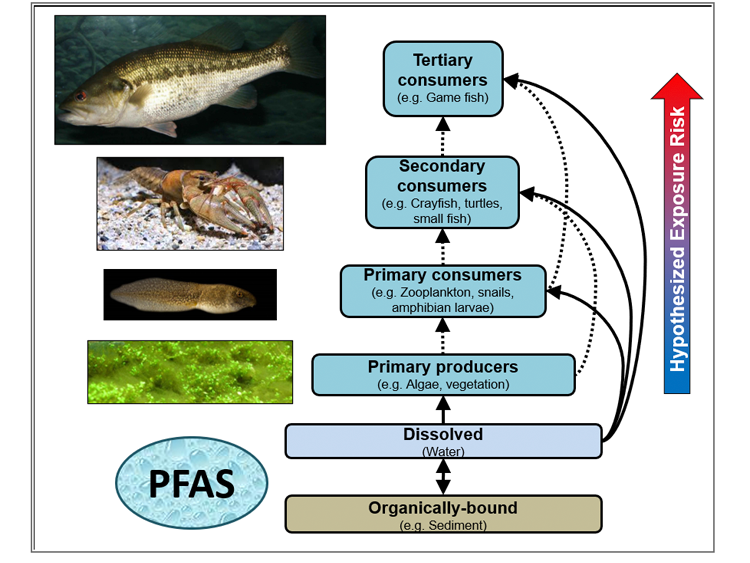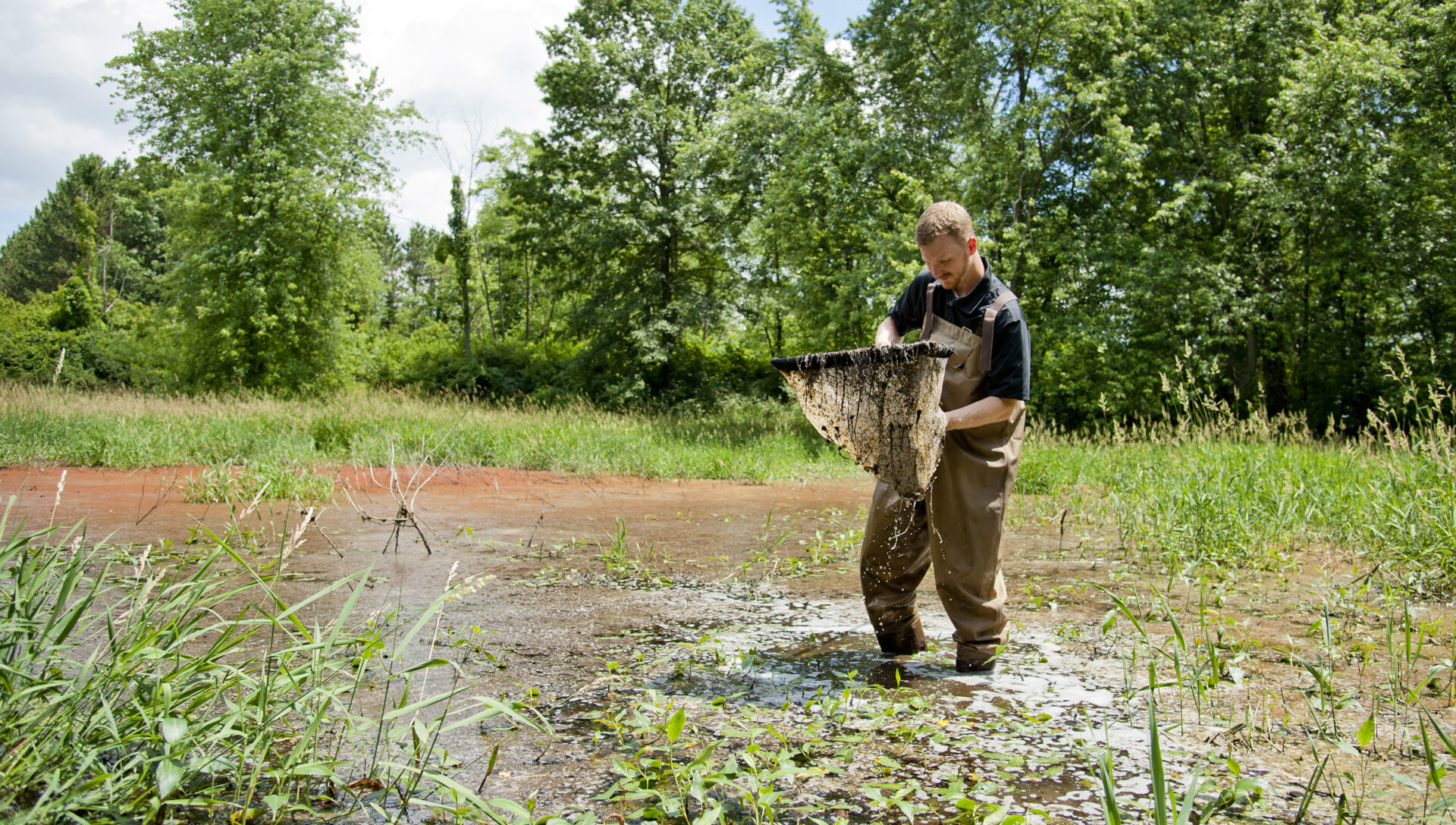Clarks Marsh PFAS field research
‘Forever chemicals’ in wetlands
In addition to directly examining the effects of PFAS on amphibians, we also conducted field-based research examining PFAS distribution and movement in an aquatic food web (see figure) impacted by PFAS: Clark’s Marsh Wildlife Area, Oscoda, MI. This work, funded by the Michigan Department of Natural Resources, expanded on our initial surveys of PFAS in Michigan wetlands in collaboration with Michigan’s Department of Environment, Great Lakes, and Energy and Purdue’s Center for the Environment. Our goals were to 1) develop conceptual ecosystem model describing food web structure and PFAS exposure routes, 2) quantify the bioaccumulation of 24 unique PFAS in aquatic and semi-aquatic plant and animal species, and 3) determine bioaccumulation and biomagnification factors for each PFAS. The results of our work will greatly improve our understanding of the impact of PFAS on aquatic food webs and sources of PFAS flux to terrestrial ecosystems. These data are essential for effective ecological risk assessments, guiding future research initiatives, and the land managers in need of empirical data to make management decisions.



